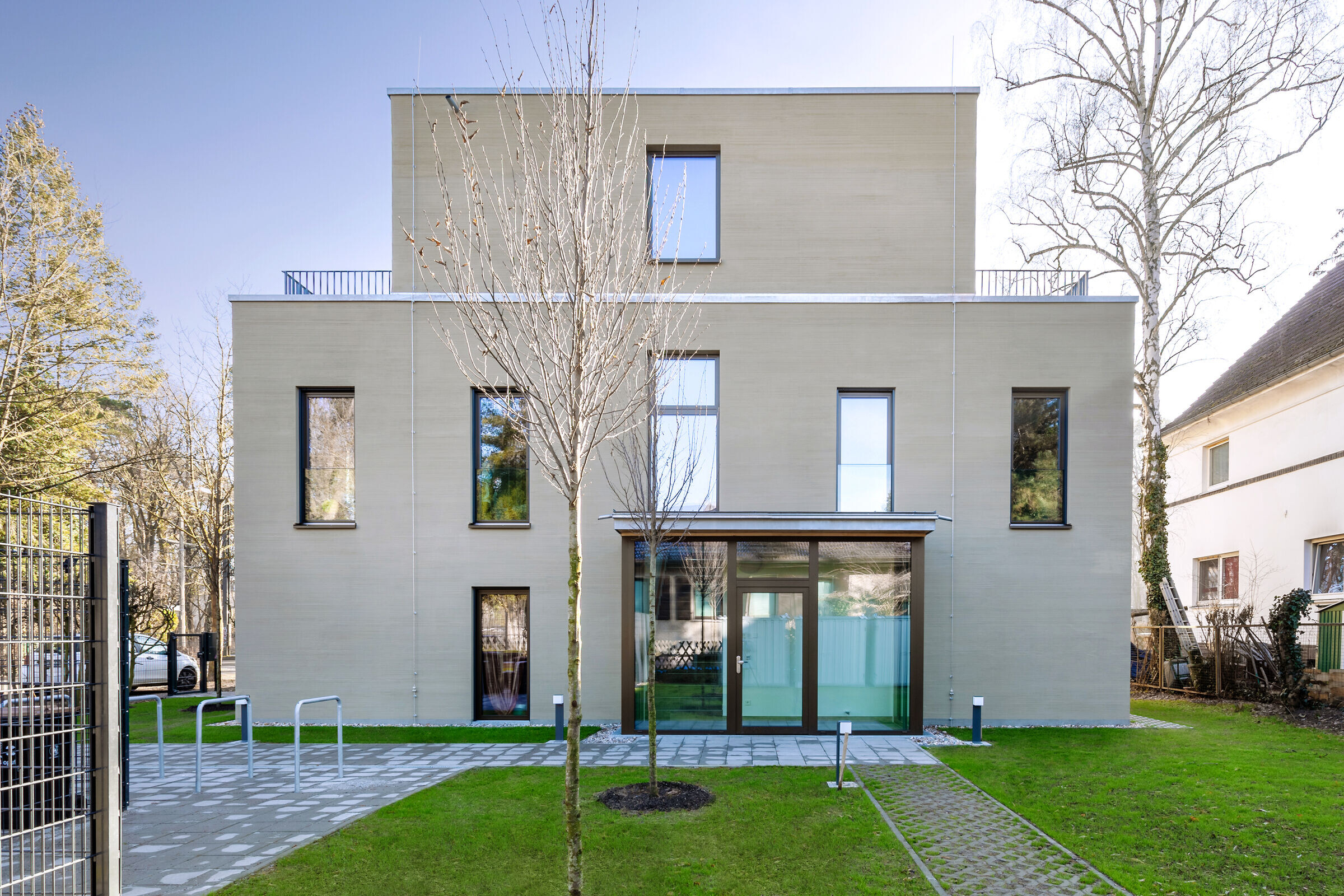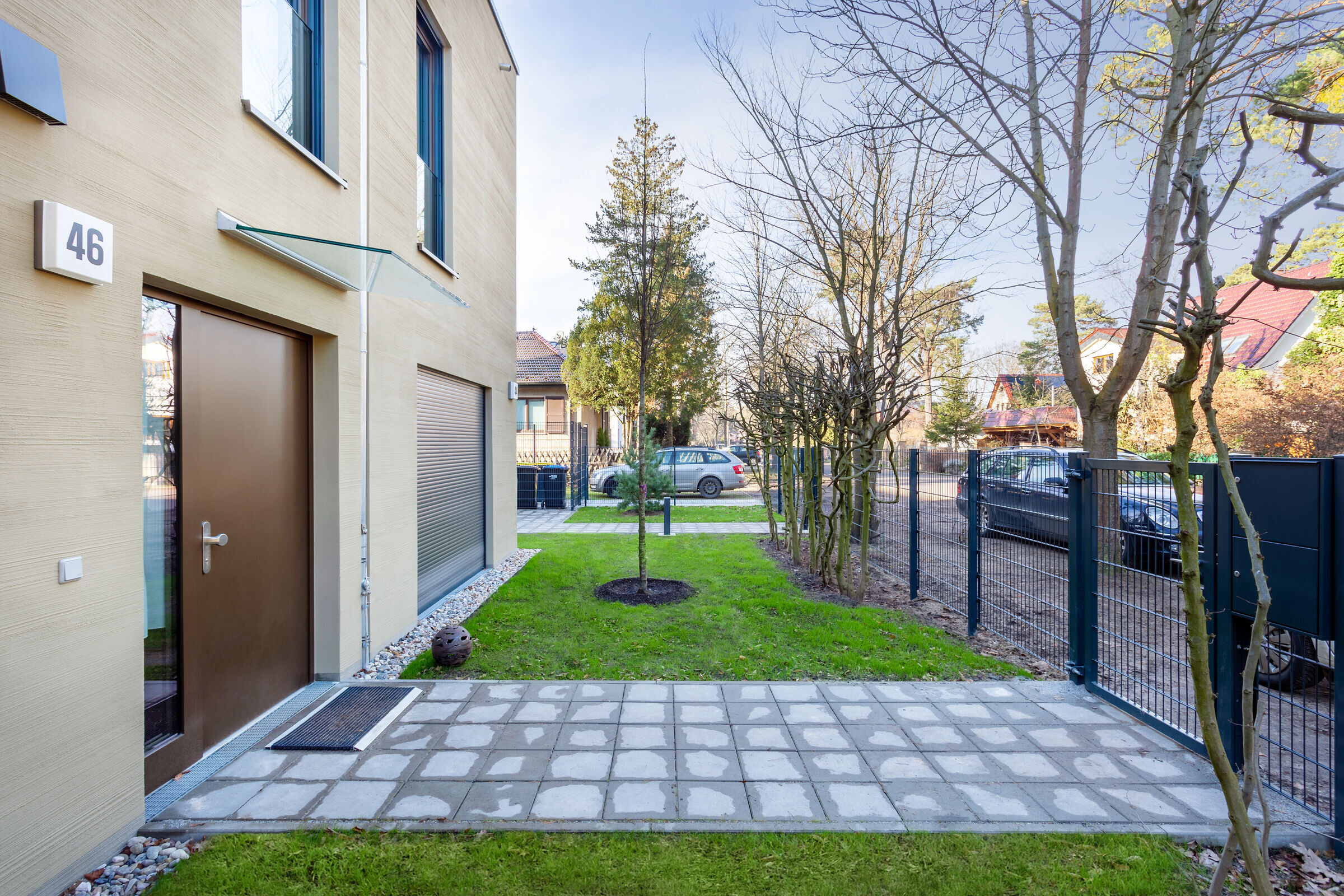New construction of Five Sustainable Residential
• Exclusive use of renewable energies.
• space-efficient, compact floor plans to make rents affordable and reduce resource consumption.
• final energy demand / annual primary energy demand: 23 kWh/(m2*a), 55% self-produced on site,
• Greenhouse gas emissions balance: 20kg CO2/m2*a (construction operation and demolishing)
• Construction of elemental lightweight concrete walls with resource-saving expanded clay in 14 days.

Peter Ruge Architekten created a new typology for a residential building in Berlin's southeast area. A new inclusive Co-Living apartment, the first of its kind, is realised, with users sharing three separate addresses in the same flat. This is made possible by the various entrances designed in a multi-family compound. The building's architecture is similar to a puzzle, with each of the distinct entrances fitting together to make one coherent unit. The entrances come together to produce a unique living space in the same way as puzzle pieces work together to form an image.

The new typology represents a paradigm shift in typical living arrangements. This concept of co-living apartments is intended to develop a sense of community and belonging among its inhabitants, despite living in a different apartment in the same building. A distinctive architectural feature is the multiple entrances that bring users right to the doorstep, providing a sense of independence and solitude for tenants.
The two apartments on the ground floor are meant to be barrier-free to meet the rights of people with disabilities to participate in all aspects of community life. As the prevalence of disability rises with age, we want to make sure that everyone, regardless of physical ability, has equal access to the same amenities and services. This will contribute to the creation of a welcoming environment for all members of the community.

In terms of architecture, each apartment is designed around a central core, resulting in unrestricted flow across the entire flat. Unlike traditional residential units, each space is easily accessible, eliminating the need for extensive corridors. This provides for more efficient use of space, increased living space, and greater design freedom. This results in cosy and functional apartments.
A 'pop-up window' on the second level adds to the building's unique identity. It acts as a frame that captures the four seasons while allowing natural daylight to penetrate while providing an unstructured view of Grünau woodland. The terraces are a great location to unwind and take in the scenery. By blending into the background, the pop-up window establishes a seamless connection between inside and outside, while providing a unique living experience.

The vegetation in the compound must be left undisturbed for ecological reasons as well as to protect the area's existing state of conservation. The compound's trees give natural shade from the hot summer sun and the cold winter weather. This helps to keep the compound's temperature stable and offers a comfortable environment for occupants.

The façade is plastered with a brush - the three-storey building makes manual finishing possible, giving it a bark-like finish. The colour scheme is based on the greenery but also reflects the tones of the trees throughout the year: the budding colour of spring, the lush green of summer, the golden colour of autumn and the ochre of the tree trunks in winter.














































